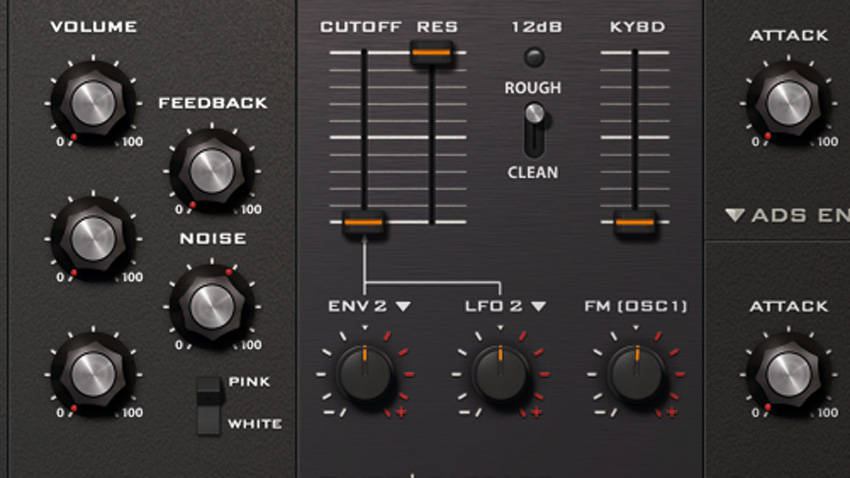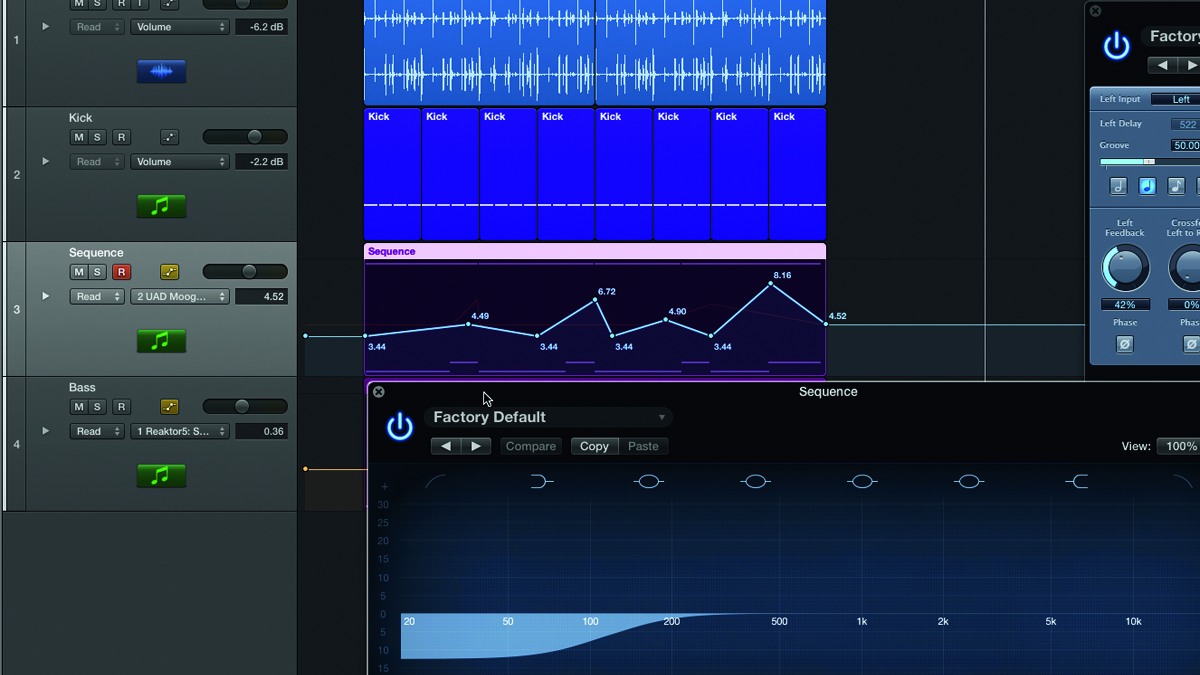Synth skills: 6 ways to get creative with filters
Sculpt your sound

Ah, the humble filter, the cornerstone of synth sound design. Without it, your sounds would just be dull and lifeless. But are you getting the most out of yours? Here, we give you some tips to help you give your synth patches added character.
1. Make your synth pads sing
To get extra life and air into a synth pad, it's tempting to turn to an EQ and boost the top-end or to add an exciter. These techniques will deliver, but they won't provide more stereo width, and often this is the missing ingredient.
Send your synth to a new auxiliary and set up a filter with a high-pass mode and a high cutoff to leave only the upper midrange and treble ends audible. Pan it hard to the left. Repeat with a second auxiliary, using the same filter settings, panning this one hard right.
Now you'll have a huge, bright pad, which occupies the complete stereo image of your mix. If it's too much, turn down the auxiliary return levels.

2. Go outboard
If you have a hardware synth with an external input that lets you access its filter section from an outside signal, don't automatically make do with a filter plugin instead. Incorporating external gear into a DAW has never been easier, and nothing beats tweaking a synth's filter in real time.
If your synth isn't equipped with such a feature then consider a standalone hardware filter. Our particular favourite is the Waldorf 2-Pole Analog Filter, which you can pick up for just over £150.

3. Self-oscillate
If you have a synth with a filter capable of self-oscillating, it can be a lot of fun pushing it to its max. A screaming resonant filter is probably more engaging than most plain oscillators and the patches generated generally fit nicely into many a project.
Want all the hottest music and gear news, reviews, deals, features and more, direct to your inbox? Sign up here.
To find out if your synth has one, dial all oscillators and the filter's cutoff to zero. Now slowly increase the resonance level. It should start to become audible near the top of the range, but make sure you keep the volume down for your ears' sake.
Now you can add in some noise for extra grit and try running it through a delay or reverb to give your patch some character.

4. Get moving
Things can get more exciting if you give your filters some movement. Most synthesizers combine filters with dedicated gate sequencers, envelope generators or LFOs to provide a range of dynamic or synchronised filter effects.
If you don't have access to any of these, then you can set up automation lanes within your DAW to record any sweeps and movement of the cutoff and resonance.
5. Don't forget the basics
Filtered noise sweeps are a staple FX technique for computer musicians, being particularly handy for adding pace and tension to transitions and breakdowns in dance music.
Don't be afraid to mix up your filter types here. Low-pass filter sweeps will convey a build-up in your arrangement, whereas a high-pass filter is good for dropping into less complex song parts. Experiment with noise types, too: white noise is quite harsh compared to its warmer pink brother.
6. Create a stereo filter effect
Some filter plugins allow for independent processing of left and right channels, but if yours doesn't, don't worry. To create wide and potentially contrasting stereo effects, try this.
Send your unprocessed source sound to a new auxiliary and, on that buss, set up a filter which uses an LFO or automation to sweep through one bar.
Switch off the output routing of your original source sound, so the auxiliary signal is the only one making a noise. And then, pan this auxiliary to the left. Then, go back to your original source sound and send it to a second, independent auxiliary.
Copy the filter plugin parameters from AUX 1 but invert the shape of the movement, either by adjusting the shape of the LFO, or redrawing your automation. Pan this auxiliary to the right. Now you should hear two contrary motion filters, with one opening and one closing, from the far left to the far right of your speakers.
MusicRadar is the internet's most popular website for music-makers of all kinds, be they guitarists, drummers, keyboard players, DJs or producers.
GEAR: We help musicians find the best gear with top-ranking gear round-ups and high-quality, authoritative reviews by a wide team of highly experienced experts.
TIPS: We also provide tuition, from bite-sized tips to advanced work-outs and guidance from recognised musicians and stars.
STARS: We talk to artists and musicians about their creative processes, digging deep into the nuts and bolts of their gear and technique. We give fans an insight into the actual craft of music-making that no other music website can.
